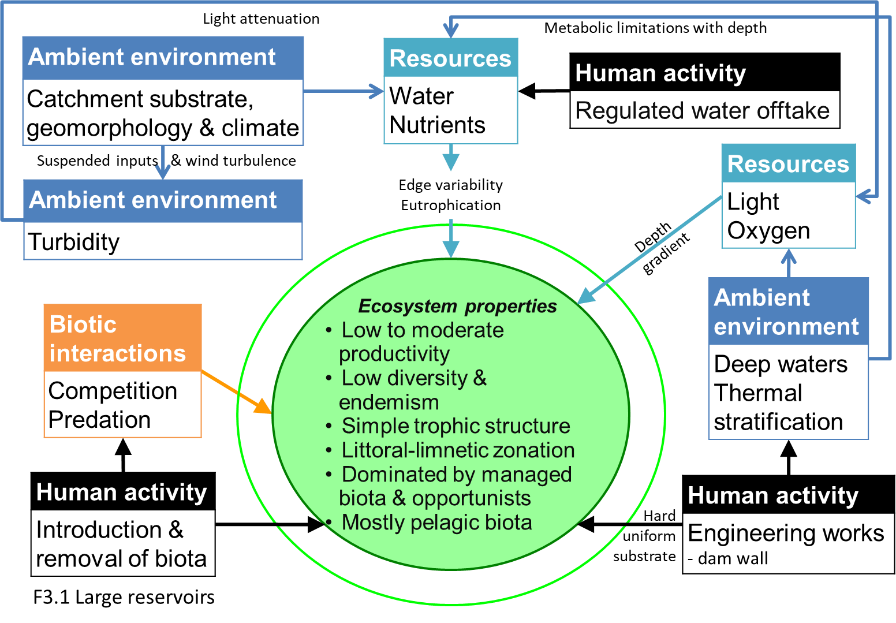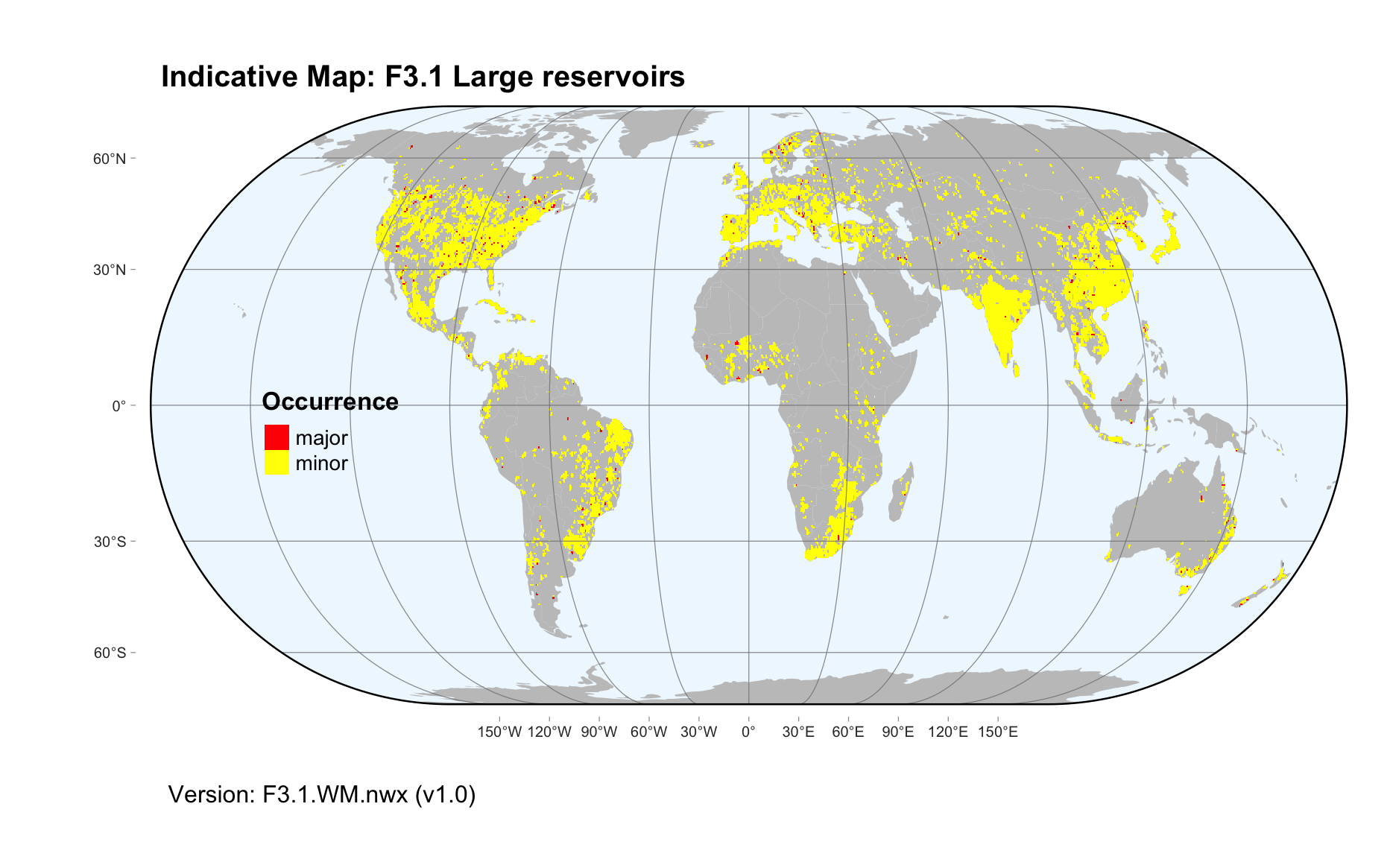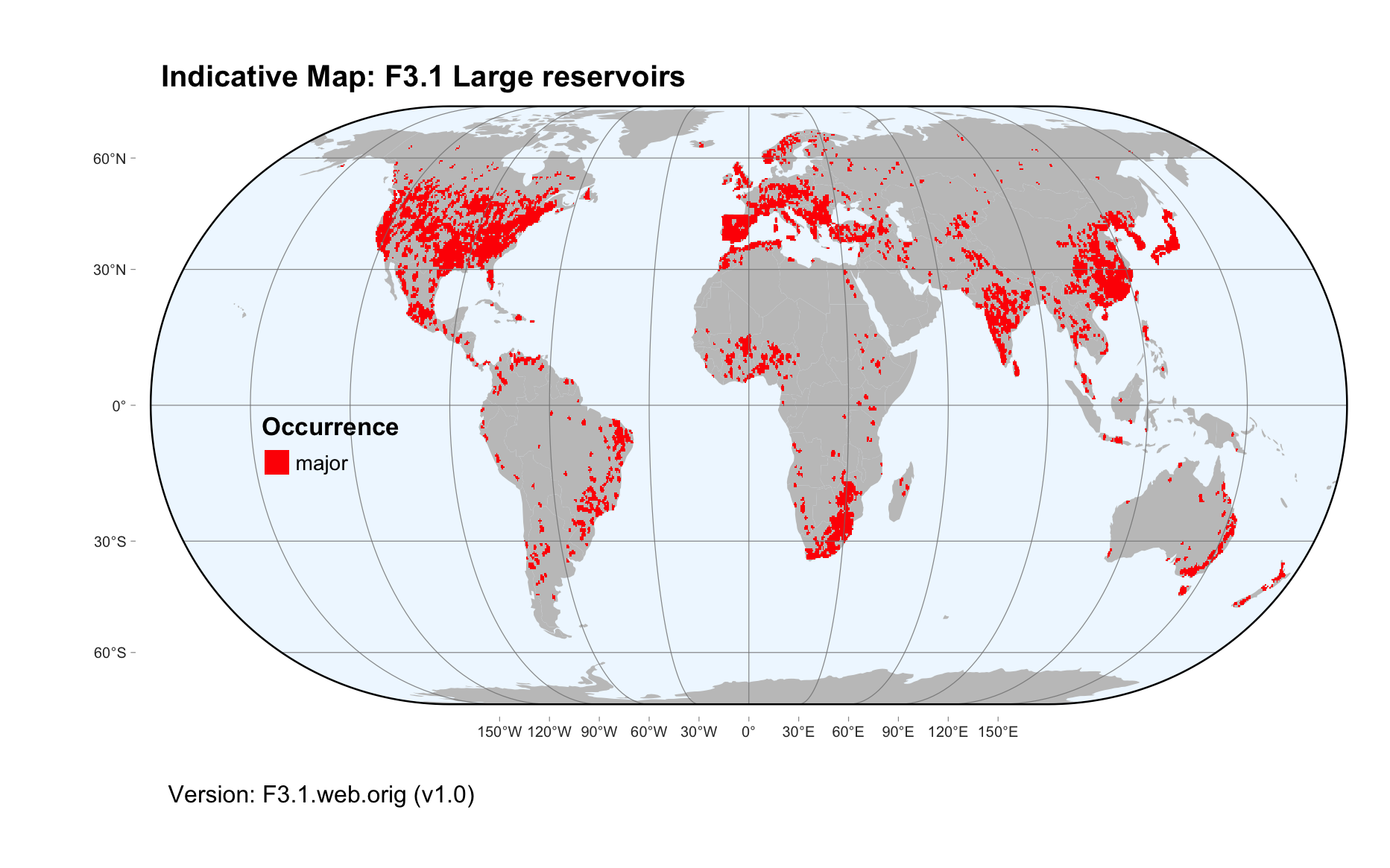Global ecosystem typology
Alternative site for the Global ecosystem typology with additional information for ecosystem profiles and indicative maps.
This site is maintained by jrfep
F3.1 Large reservoirs
Biome: F3. Artificial wetlands biome
Contributors:
(texts)
Large dams or reservoirs occur in humid, populated areas of the world. Their biological productivity and diversity is generally limited due to their depth and frequent and large changes in water level. Shallow zones have the highest diversity, with simple food webs of algae, waterbugs, birds, frogs and aquatic plants, often supporting introduced fish species. Plankton live at the surface, but life is scarce in the depths. Algal blooms may be common if there are high nutrient inputs from rivers.
Key Features
Large, usually deep stratifed waterbodies impounded by walls across outflow channels. Productivity and biotic diversity are lower than unregulated lakes of simila rsize and complexity. Trophic networks are simple.
Overview of distribution
Scattered across all continents with high concentrations in Asia, Europe and North America.
Profile versions
- v1.0 (2020-01-20): DJ Roux; RT Kingsford; DA Keith
- v2.0 (2020-06-18): DJ Roux; RT Kingsford; CA Reidy Liermann; B Robson; M Kelly-Quinn; DA Keith
- v2.01 ():
- v2.1 (2022-04-06): DJ Roux; RT Kingsford; CA Reidy Liermann; B Robson; M Kelly-Quinn; DA Keith Full profile available at official site
Main references
Selected references for this functional group:
Lehner B, Liermann CR, Revenga C, Vörösmarty C, Fekete B, Crouzet P, Döll P, Endejan M, Frenken K, Magome J, Nilsson C (2011) High‐resolution mapping of the world’s reservoirs and dams for sustainable river‐flow management Frontiers in Ecology and the Environment 9: 494-502 DOI:10.1890/100125
Clavero M, Hermoso, V (2011) Reservoirs promote the taxonomic homogenization of fish communities within river basins Biodiversity and Conservation 20, 41-57 DOI:10.1007/s10531-010-9945-3
Diagrammatic assembly model

Maps
Maps are indicative of global distribution patterns are not intended to represent fine-scale patterns. The maps show areas of the world containing major (coloured red) or minor occurrences (coloured yellow) of each ecosystem functional group. See general notes on maps.
There are 2 alternative versions of the indicative map for this functional group, please compare description and sources below.
F3.1.WM.nwx_v1.0

Datasets
- GOODD-2020
- HydroLAKES-1.0
Map references
Mulligan, M., van Soesbergen, A. and Saenz, L. (2020) GOODD, a global dataset of more than 38,000 georeferenced dams Scientific Data 7 (31) DOI:10.1038/s41597-020-0362-5
Messager, M.L., Lehner, B., Grill, G., Nedeva, I., Schmitt, O. (2016) Estimating the volume and age of water stored in global lakes using a geo-statistical approach Nature Communications 13603 DOI:10.1038/ncomms13603
F3.1.web.orig_v1.0

Datasets
- GLWD-2004
Map references
Lehner B, Döll P (2004) Development and validation of a global database of lakes,reservoirs and wetlands Journal of Hydrology 296: 1–22
Check: the Glossary / Profile structure / the public document